"They Will Be Remembered for Centuries." A Conversation with Leslie Cavendish, The Beatles' Hairdresser
Leslie Cavendish (London, 1947) was the private hairdresser for The Beatles from 1966 until the group's end. Even afterward, he continued working with Paul McCartney, the first Beatle he met. His is a story that borders on the novelistic, something that could only have happened in Swinging London in the mid-60s of the last century. A Jewish boy born in the East End, who moved to North London and, through a series of decisions and circumstances, ended up at the heart of the city's pop scene with people who changed culture and, consequently, the world. He wasn't just a privileged observer; he was also one of those figures who, from the shadows and with discretion, contributed through his work to this great revolution of minds and sensibilities.
His story, captured in the book The Cutting Edge co-written with Eduardo Jáuregui and Neil McNaughton, takes us on a journey from Cable Street, the legendary street where he was born, through the football parks of North London. It moves from the exclusive Vidal Sassoon salon on Bond Street, where he joined as an apprentice in 1962 and graduated as a stylist three years later, to a sunny kibbutz in northern Israel where he volunteered during the 1967 war. It traverses Loftus Road stands, Queen Parks Rangers' stadium, to The Beatles' Magical Mystery Tour bus, and also visits Apple Records offices and Paul McCartney's house in St. John's Wood. He opened a salon sponsored by Apple at 161 King's Road, Chelsea, in 1967. He was present during crucial stages of the lives of the Liverpool quartet, cutting hair, being a confidant, and one of the most trusted employees of John, Paul, George, and Ringo. After the group's breakup, he opened his own salon and stayed in touch with them until around 1975. He ventured into footwear sales, lived in Spain, has two children, and today is a distinguished gentleman who gives lectures, leads Beatles-themed tours, and acts as an authorized consultant on 1960s London culture.
Cavendish is a fountain of stories, recounted with the assurance of someone who survived the whirlwind of the marvelous decade but with the warmth of someone who knows that all those long-haired heroes were as human as he and us. Always discreet, he rarely speaks of the secrets he saw and lived, but rather appreciates that he was able to be there and share his memories with the thousands of Beatles and Swinging Sixties fans today who, clearly, would have given anything to be in his place.
I spoke with Leslie Cavendish on several occasions during October 2023, first via email and later through video calls. Based on these conversations, we integrated this text, editing or condensing some parts for clarity and rhythm. In italics, I provide commentary, narration, or context. In regular font, he speaks.
On my mother's side, my grandfather came to England from Georgia; my grandmother was born near the border of what is now Poland and Belarus in 1899. She was a seamstress and he dealt in leather. They settled in a house on Cable Street, which I can still remember, although I was very young when they left: I was around two years old. Downstairs, they had a shoe shop. I remember seeing Tower Bridge from the house, that's how close it was. The street was a place with many Jewish and Irish immigrants who got along well.
I went to Poland last year on a program called March of the Living because my wife's brother’s father-in-law, Harry Olmer, is a Holocaust survivor. We went to Belzec, where his whole family got wiped out. The same happened with much of my family on my father's side.
On my father's side, they were Polish, from a village a few kilometers from Warsaw. I never met those grandparents; both died in their forties. They had seven children—four sons, three daughters—and two of them went to America. My dad's brother and sister-in-law ran a boxing ring in East London, and I used to go watch the fights. I loved it! Still do. I wasn’t aware then, but a lot of famous world champions turned up there when they were young. There were also loads of tourists swarming around this famous place, Hanbury Street, because it was one of the spots where Jack the Ripper committed one of his murders. I didn't even know who he was; I had to find out later. But you see, there were things going on all the time.
Cable Street, being an immigrant street, was the setting for a story that marked an entire era in London and is remembered to this day as a heroic moment. It's known as the Battle of Cable Street, although that name is quite romanticized. In October 1934, the British Union of Fascists led by Oswald Mosley decided to flex their muscles by marching through the streets, specifically in that area. However, the local residents, along with trade unions, communist and anarchist associations, Jews, and Irish, united to prevent it. The police were present, and the march was hindered by all these actors. Although there were skirmishes here and there, the overall outcome was favorable (despite around 175 injuries and 150 arrests), and for the anti-fascists, it was a triumph that is remembered and celebrated to this day. The Cavendish family was there.
In 1936, when Mosley formed the Blackshirts, he decided it was a good idea to march down Cable Street to show their strength. There was a large, unofficial Jewish brigade that got together to stop them from doing it. My family lived at the beginning of the street, and my mother went to the top floor with a bucket full of water and said, "If they march down here, they'll hear from me." Luckily, they didn't encounter her because the march didn't manage to pass through there.

I went there not long ago, and there's a big plaque. That story was my introduction to antisemitism. As a child, I didn't know much about it because we moved to a relatively quiet area in North London. The story of Cable Street is one that I like to tell. People came together. It was a good thing.
Although we left the area in the '50s, we used to visit my grandfather on Sunday mornings when he used to go over Tower Bridge with his cart filled with shoes. My mother was the oldest of four sisters, so she helped my grandfather, who treated her like the son he always wanted. She was always very strong and upfront, and wouldn't take any nonsense. We would go to the market in the Elephant and Castle, a few doors away from where Charlie Chaplin was born, where my grandfather opened a couple of shoe shops called Alex Shoes. Watching them sell was fascinating. My mother was the rock of my family and passed away a few years ago at the age of 97.
Eventually, they sold the shop, and my grandparents came to live with us next door. So we had a full house because my mother's younger sister—who is only 18 months older than me—and my mom and dad were there. But also along came two cousins, sons of another of my mother's sisters who was married to Tony Crombie, the famous jazz drummer. She was stunning! We knocked down the fence between the houses and lived as if it was a single house. I lived a funny, lovely childhood, a typically Jewish one, loud and noisy, very normal. But also a very interesting one.
For Leslie Cavendish, his upbringing in London’s Jewish community shaped his early life and career trajectory in profound ways. Born in the East End and later moving to Edgware and Burnt Oak with his parents, Leslie experienced firsthand the vibrant cultural mix of Jewish, Irish, and Scottish neighbors. Despite being one of the few Jewish children in his primary school, he navigated occasional bullying due to systemic antisemitism, which left him with a scar on his lip from a physical altercation.
Leslie’s love for football flourished during these formative years, becoming his passion and skill set as a central defender and captain of his school team. Amidst his youthful pursuits, his musical tastes evolved from sophisticated jazz influences brought by his uncle Tony Crombie to the revolutionary sounds of American pop records, which captivated him. However, it was the arrival of the Beatles that completely changed his musical landscape. Their Liverpudlian charm, distinctive accents, and original songwriting set them apart from other bands of the era, sparking Leslie's fascination and admiration.
Initially aspiring to become a professional footballer, Leslie shifted gears inspired by his friend Lawrence Falk, who found work at a hair salon and introduced Leslie to the world of hairdressing. Following Lawrence’s path, Leslie joined Vidal Sassoon’s salon on Bond Street, where he trained and honed his skills, ultimately graduating as a stylist. This career choice proved pivotal, allowing him to unleash his creativity and view clients as living canvases for his artistry.
By 1963, Leslie was actively involved in London’s Jewish community, attending services during Rosh Hashanah and Yom Kippur, and frequenting Jewish clubs where he could socialize, listen to music, and meet girls. It was in this community setting that he discovered an advertisement in The Jewish Chronicle for a small concert at Club Pigalle featuring a relatively unknown band called the Beatles. Intrigued, Leslie secured tickets and attended the event, witnessing the early stages of the Beatles' rise to fame. Little did he know that three years later, he would be cutting their hair.
The pivotal moment at Club Pigalle underscored Leslie’s introduction to the Beatles, who, despite their growing fame, honored their commitment to perform for a small audience predominantly comprised of Jewish attendees. This experience left an indelible mark on Leslie, setting the stage for his eventual career as the Beatles’ personal hairdresser and a witness to their transformative impact on music and culture.
The Cavendish family wasn't necessarily very observant, but they were proud of their Judaism. They attended synagogue on major holidays, and he himself had his bar mitzvah at the age of 13. The shadow of the Shoah loomed over his grandparents and parents, who, however, chose to take a different path and live intensely within their own community. Thus, Leslie Cavendish learned to seize the day and take the opportunities that came his way.
In primary school, Cavendish had very few Jewish classmates; this caused them problems with bullies who picked on them: an age-old affliction, systemic antisemitism, that permeates everything. Once, there was even a physical altercation that left him with a scar on his lip. However, his strong side was football, which he discovered in the parks.
I was born in the East End but moved with my parents to northwest London, to the Edgware and Burnt Oak area. Our neighbours were Irish, Scottish and English and there were only five Jewish families on our street. At my local junior and senior schools, I was one of only five Jewish pupils who attended, and yes, I had some problems with some of them, but it was dealt with.
My passion for football began in the streets and local parks of my area. It was my main interest through my school days. I was a pretty good central defender and captain of my junior school team. All the friends I grew up with were either Arsenal or Tottenham, but I found that the banter and hatred of both supporters was not to my liking. Through a chance invite I went to a Queens Park Rangers game. That was it! I have been a supporter now for over 60 years and still, to this day, a season ticket holder.
My uncle, Tony Crombie, always used to come by and gave my cousins all these records. So, I would listen to Lena Horne, Ella Fitzgerald, Thelonious Monk, and John Coltrane. It all sounded very sophisticated to me, so when he got some pop records from America, it was very different. I remember, in particular, one by Dion & the Belmonts. I thought: bloody hell, this is fantastic! One day, Uncle Tony went to see a film, Rock Around the Clock; he had started playing with Ronnie Scott but right away decided to form a band inspired by Bill Haley and the Comets. He called it Tony Crombie and His Rockets and did a song called “Let’s You And I Rock,” which might be the first English rock 'n' roll song in 1956. Of course, I didn't realize this at the time.
I was never really into Elvis, but I would ask my cousin to play records by Dion, the Everly Brothers, or Paul Anka. And then, suddenly, the Beatles came up! That was something! They were different and looked good, they were from Liverpool and it showed in their accent. It was fascinating. You would listen to other bands and they were following a formula with very similar songs, but not the Beatles. And they wrote their own material. Their first album had some covers there, but most of the songs were by Lennon/McCartney, and that was quite interesting. If you looked at singers like Perry Como, they had a smart, neat look, sort of preppy, but nothing to get excited about. These guys came with longer hair and very original music.
I wanted to be a footballer, but I wasn't good enough. My best friend, Lawrence Falk, left school at 15 and went into ladies hairdressing and the reason was women. I thought it was a great idea, so I followed him; he worked in a salon on Baker Street, and I ended up in Vidal Sassoon's salon on Bond Street. Lawrence started the first unisex salon in the UK, Crimpers, and I became a stylist after I finished my apprenticeship at Sassoon’s. It was a great decision because you suddenly became a hair artist and after you had finished the client’s hair was like a live painting on canvases who could walk.
By 1963, I used to go to Jewish clubs in synagogues in north London. I attended Rosh Hashanah and Yom Kippur services and Sunday night events where you could meet girls and there was music. Many Jews congregated in these clubs, and it was great.
My mother, like many other Jewish families, received the community newspaper The Jewish Chronicle; she read it and saved it to send later to our family in the United States. And there, on one of the pages, was an ad for the Pigalle Club. The venue held small concerts—they called them Jew-Do in a nice way, but I don’t think the term stands today—with people like Freddie and the Dreamers and other good bands from everywhere, but for the night of April 21, 1963, the Beatles were advertised. The Beatles! I couldn't believe it, but I got tickets and got there that Sunday. They were starting to get big, huge, appearing on television and in the papers, and that same night they played at the annual New Musical Express Annual Poll Awards All-Star Concert at the Empire Pool in Wembley in front of ten thousand people. So I never thought they were going to make it to our little party.
But they did turn up and you got to give Brian Epstein a lot of credit for that. There weren’t many people—definitely not thousands as in their previous gig—, almost all of us were Jewish. The Beatles came onstage, did four or five songs; I was standing as close as I could, looking up. It was fantastic. To see something like that in real life! It was my first real concert, because I had seen Shirley Bassey and things like that with my mom, but this was something else. I was fifteen. And to think that three years later I would be cutting their hair!
At fifteen, I began as an apprentice at Vidal Sassoon's, washing hair. He was another revolutionary. I had never met anyone like him before. Always sharply dressed, he had charisma, and was so well spoken. I could not understand that at first, coming from the East End, but he spoke in whispers. When he cut hair, his mouth would mime the sound of the scissors. He would dance around, moving his hands, all very exaggerated but beautiful. He was like a ballerina with scissors, with a white shirt, a colourful tie, cufflinks, and the finest suits. He’d go, "Leslie, take my jacket," like a bullfighter with his cape.
After three years of apprenticeship, you could get a certificate and become a Sassoon stylist if you had the potential. So, I moved from one stylist to another in the salon, learning all the different ways to cut hair. There were haircutters, hairdressers, and stylists. I learned quickly and became good at adapting the Sassoon style to a person's face and personality. I felt comfortable doing that. However, a bouffant hairstyle like Dusty Springfield's made me a bit panicky. I could do it, but it wasn't my cup of tea.
Roger Thompson was one of the best haircutters ever, and I learned a lot from watching him. But my strength lay in my background: I came from a family of salespeople, my grandfather and my mother were amazing at it. Once, as a kid, I was at the shop and a man came in looking for a certain kind of shoe and my grandfather had a beautiful pair of English Northampton leather stitched brogues. He needed a size 10. When I handed the box to my grandfather, one shoe was black, but the other was white! He said to the customer: “If you go up the road you can get some shoe dye so you can paint the other one and you got a fantastic pair of shoes!” The man left happy! I was amazed that my grandfather could do that.
But I was the same way. We stylists earned a commission for sending clients upstairs for a treatment or hair coloring. And I was good at that. If you had dry hair, for example, we suggested a treatment, and it was Vidal's philosophy: if they don't look good, we don't look good. And I got a buzz out of selling...
And it was through Roger that I met Jane Asher, which was my gateway to the Beatles. But it was not intentional. Though she was Paul McCartney's girlfriend at the time, it was never mentioned when she came to the salon. She was always kind, and I washed and dried her hair, which took me about thirty minutes. One day, Roger was busy, and I had to do Jane's hair. She never talked about the Beatles. But that Saturday morning, she told me about a movie she was filming and then asked if I was available to cut her boyfriend's hair. She wrote down the address, which was on Cavendish Avenue. "That's my surname!" I said. "Maybe it was meant to be," she replied.
From then on, Leslie Cavendish began working with Paul McCartney. A few months later, with John Lennon and George Harrison. I visited Paul at his house, the others at their offices, and even found myself at the recording studios at Abbey Road. Soon, because of my quality, tact, and discretion—qualities I honed with Vidal Sassoon—I became part of the Beatles' lives during their peak years. I also worked with Keith Moon—who became a close friend—the Bee Gees, Richard Harris, and the elite of London's '60s pop scene.
You have to be in the right place at the right time. You have to live and enjoy it and do things to make other things happen. But if you don’t move, nothing can happen. Loads of other people were around. If I hadn't stayed on as Roger's apprentice for three more months, as it happened, I would have missed that opportunity because someone else would have been in my place. I suppose I was lucky. Whatever it was, I was there. And that's what counts.
On June 1, 1967, the album Sgt. Pepper’s Lonely Hearts Club Band was released in England, sparking a pop revolution. But on June 5, war began—later known as the Six-Day War because that’s how long it lasted—between Israel and a coalition of Arab states led by Egypt, Syria, and Jordan. Leslie Cavendish recounts that when he opened the newspaper, he saw a map of Israel with arrows all pointing toward it; what he felt was that his people needed help. In London, psychedelia was promising a delightful summer; however, he gave it up, risking his professional relationship with the Beatles, and decided to join the Israeli Defense Forces.
Leslie Cavendish moved to Israel as a volunteer. The war had already ended by the time he arrived—with victory for Israel—but he settled in the Majanayim kibbutz in northern Israel, in the Upper Galilee. The land, bought in 1892, was initially a moshava—a Jewish colony in the era of the Ottoman Empire—that struggled to succeed; in 1916, with the arrival of more immigrants, it began to flourish during the British Mandate era, although it later declined. It wasn’t until 1939 that it was established as a kibbutz, a cooperative agricultural community. Mahanayim exists to this day, and in addition to working the land, it has craft workshops and a study center. In the summer of 1967, it was a young and vibrant kibbutz with a small population.
Vidal Sassoon was a passionate Jew and a Zionist. When I told him I was going to Israel for the war in ’67, he expressed his full support and assured me that my job would be waiting for me when I returned. He mentioned that he had joined the Palmach in ’48 because there had to be a home for the Jews, especially after what happened in Nazi Germany.
I was lucky because I could have worked for someone who didn’t understand the situation; instead, he gave me his blessing. At that moment, I was at the peak of my relationship with the Beatles, and they were at the peak of the world. I hesitated, wondering how I could give this up. Fortunately, they also welcomed me back when I returned.
My experience at Kibbutz Machanayim was an eye opener because I lived in a community where everyone worked for each other. We got up early to pick oranges, take chickens to market, and grow fruits. We had a swimming pool overlooking the Golan heights where we used to go after a hard morning’s work. I cut the hair of the kibbutzniks there, and they dried off in the sun.
At first, I didn’t miss anything from the UK because my life and work at the kibbutz were so different from everything else. When we had weekends off, we went to Tel Aviv, where life was more like London’s, with clubs, restaurants, and girls. But after three months, I decided it was time to go home. If I had met a girl at the kibbutz, I think I may have stayed because I loved being there.
The current situation makes me very sad. I’ve been reading a book by Avi Shatner, My Promised Land, which is a great analysis of everything that has brought us here. We must not forget that in recent months, the people of Israel have been taking to the streets to protest against the government, due to the risks posed by the new coalition. But now, everything has changed completely. The government’s mantra was “the country is safe with me,” but look what happened on October 7. It was a massacre of thousands of civilians. We are at a crossroads.
My wife told me, “I feel threatened.” We are Jews, although we don’t usually go to the synagogue—this year I did attend the Yizkor services. We share Friday night dinners with my wife’s brother’s family. But that’s how we feel: vulnerable. And it’s exactly what I felt in ’67. I felt threatened for being Jewish, and it’s a very strange feeling. That’s why I volunteered. Today I feel it again.
I can't think of any situation where being Jewish was brought up in conversation with the Beatles. Nothing. Only once, within the organization, I overheard a comment, something like: "What’s this Jewish kid doing here?" I didn’t say anything, but it felt weird, awkward. But that was it. To them, none of that mattered; they didn’t make distinctions.
There were always reporters outside the McCartney house when I was there. When they found out I was going to cut his hair, they demanded news and even offered me money. But I never said anything. And I’m sure the Beatles and their people noticed. If they had seen any statement from me in the newspapers, Derek Taylor would have given me the sack for being a bigmouth. I didn’t want to be a one-cut wonder; I wanted to work on my “own album.” And I was a huge Beatles fan! They were always relaxed when I was around. I was discreet, they trusted me. I never commented on anything but the Beatles’ hair.
In September 1967, Leslie Cavendish went on another trip. This time, not to the other side of the world, but he boarded a yellow bus with the Beatles and a troupe of actors, friends, musicians, and freaks. The Beatles were filming their movie Magical Mystery Tour around Kent; Cavendish joined as an on-call stylist. He left the salon for a few days again, although this time he had no reason that Vidal Sassoon or the others could understand, so he kept it a secret for as long as he could. Besides working on the cast’s hair, he appears on screen in several scenes of the film (a scene where he appears was cut from the final version but surfaced a few years ago) and once again had the privilege of experiencing a piece of Beatle history, this time being part of a product of the Fab Four.
His relationship with the Beatles continued until the group’s breakup. For a brief period, he had his own salon, sponsored by Apple, the Beatles’ company, on King’s Road. The salon closed after a few months, and Leslie Cavendish established his own salon and continued working with Paul McCartney until around 1975; he stopped seeing John Lennon after Lennon’s relative seclusion in Ascot and then his move to the United States; with George, it was practically after the Beatles’ breakup. He rarely cut Ringo’s hair: his wife Maureen was also a stylist and generally took care of him.
On the Magical Mystery Tour, I got to see the four Beatles working together for the first time. And that happened just a couple of weeks after Brian Epstein died. I know it sounds silly, but the philosophy was “the-show-must-go-on”, thinking that’s what Brian would have wanted. It was interesting to see them doing things together. No: it was actually magical.
Wendy Hanson, Brian Epstein’s personal assistant, was also one of my clients. She asked if I could cut his hair too, and I was thrilled. She went to New York for some business and told me that when she returned, she would make all the arrangements. She was a lovely lady. But she had to come back earlier because that was when Brian died. So, I never got to meet him, and I find that very sad. Brian was a one of a kind, a very complex person.
Nothing lasts forever, and I always knew it would end someday. But while I lived it, it was beautiful to be a part of it.
And you have to think about this: I was there at a very particular time in their history. Especially with McCartney, I met him at a crossroads in his Beatles life. The boys had just done Candlestick Park, their last ever gig in front of a paying audience, so he was at home with more time on his hands, thinking, plotting more projects. Then came Sgt. Pepper. After that, the whole Beatles crisis broke out. I could tell that Paul was mentally going through some things; but I would go to his house, cut his hair, we’d sit around having tea and chatting, and no one ever came in to drag him to an appointment or something like that. It was that stage and I happened to be around. There’s always something nice about having your hair washed: it’s relaxing and you feel clean, so I think we did each other good. I insist: I was lucky. I can’t imagine something like that being possible with a pop star today.
John was getting divorced and starting his life with Yoko; Paul ended his relationship with Jane, who introduced us, and when his new partner came along, they got rid of many collaborators, but I stayed a bit longer.
Lennon and McCartney will be remembered for centuries, just like Mozart, Chopin, Tchaikovsky, and Beethoven. That’s how it will be.
C/S.


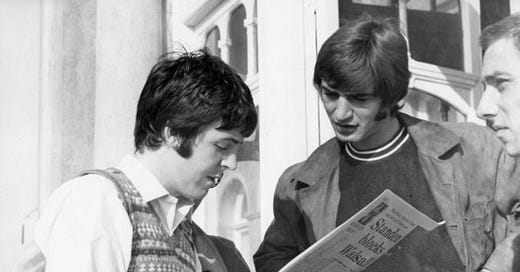


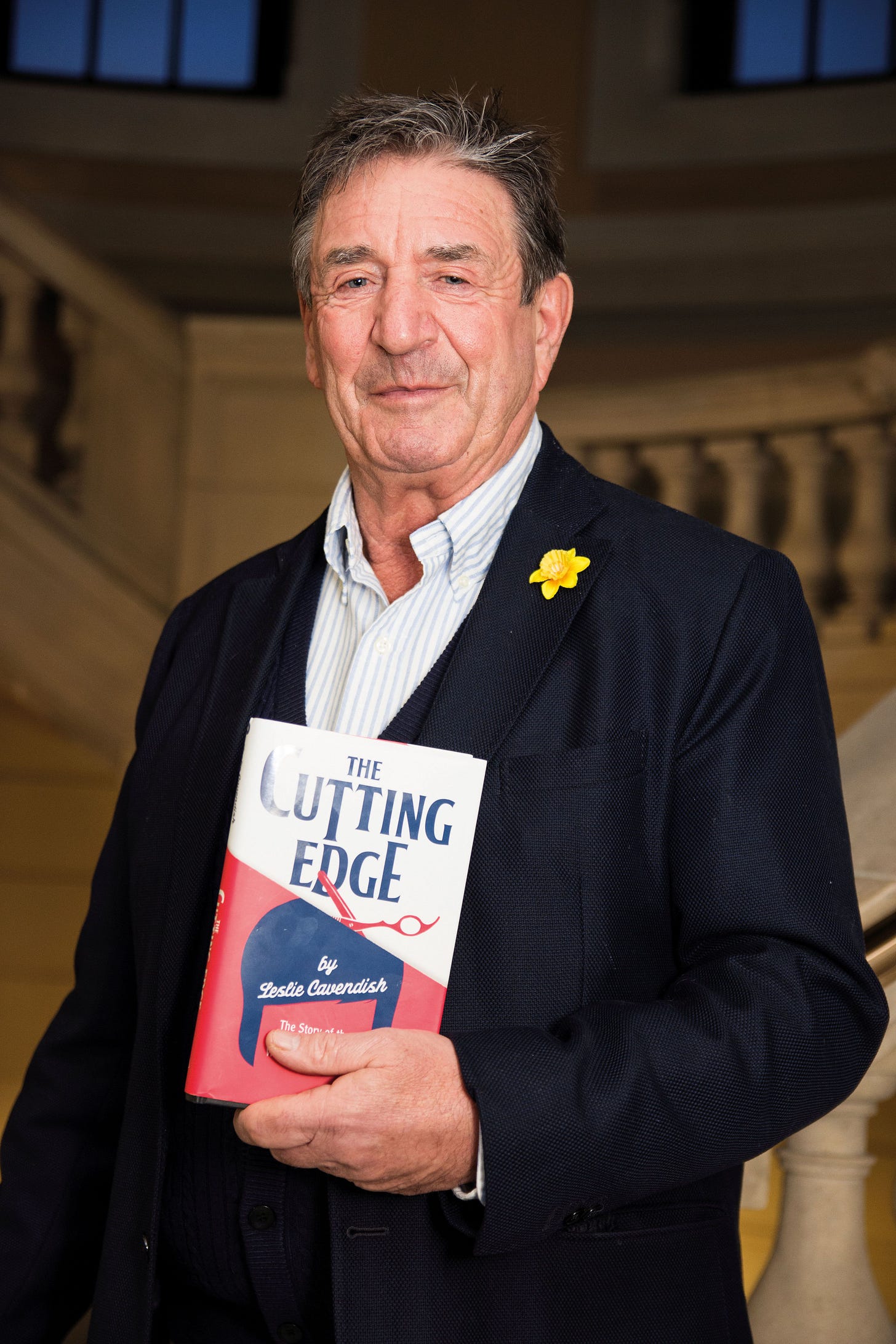
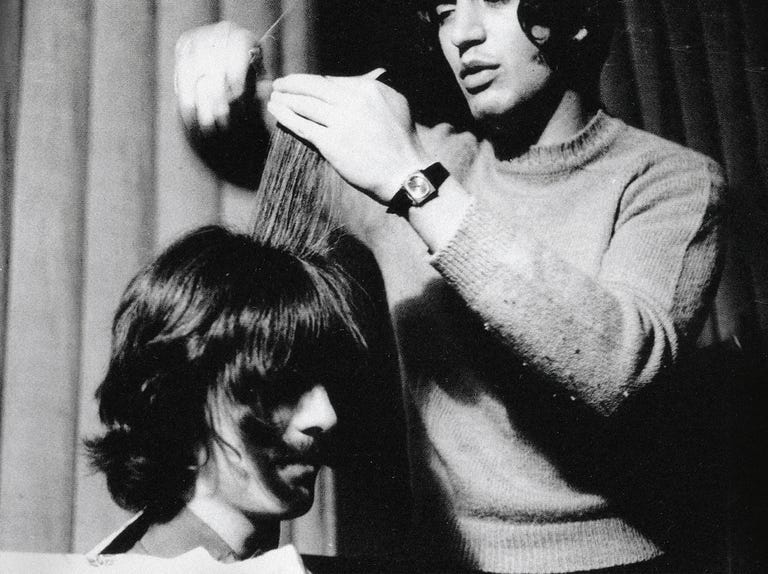

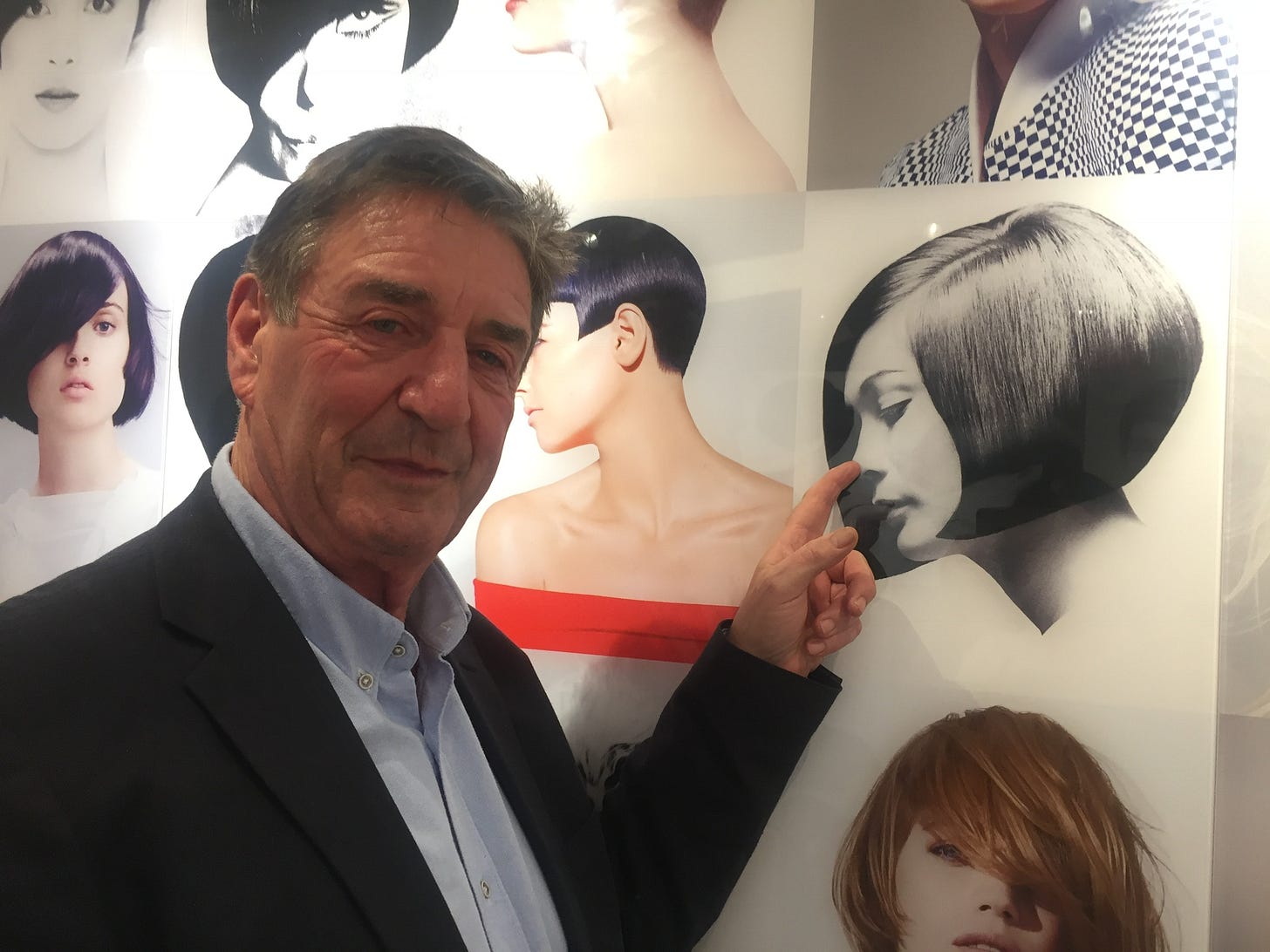
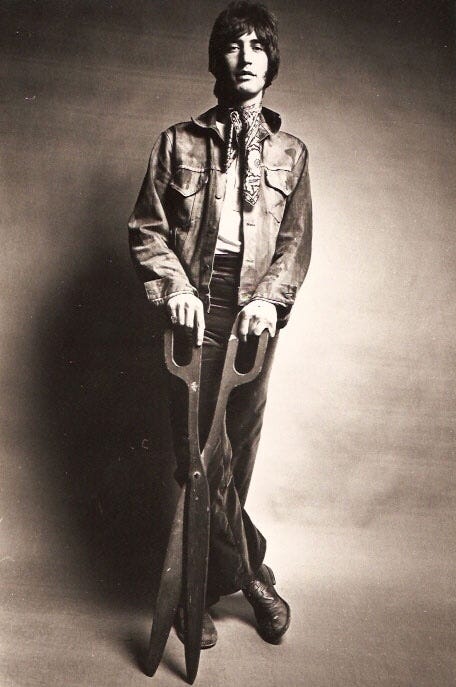
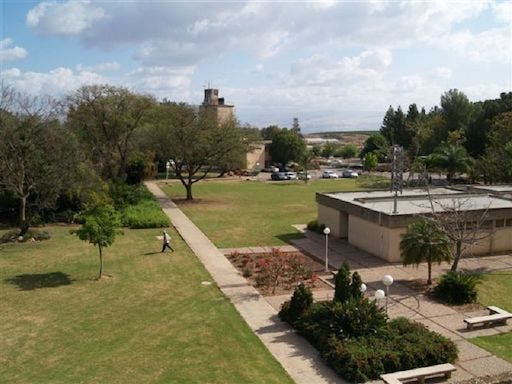
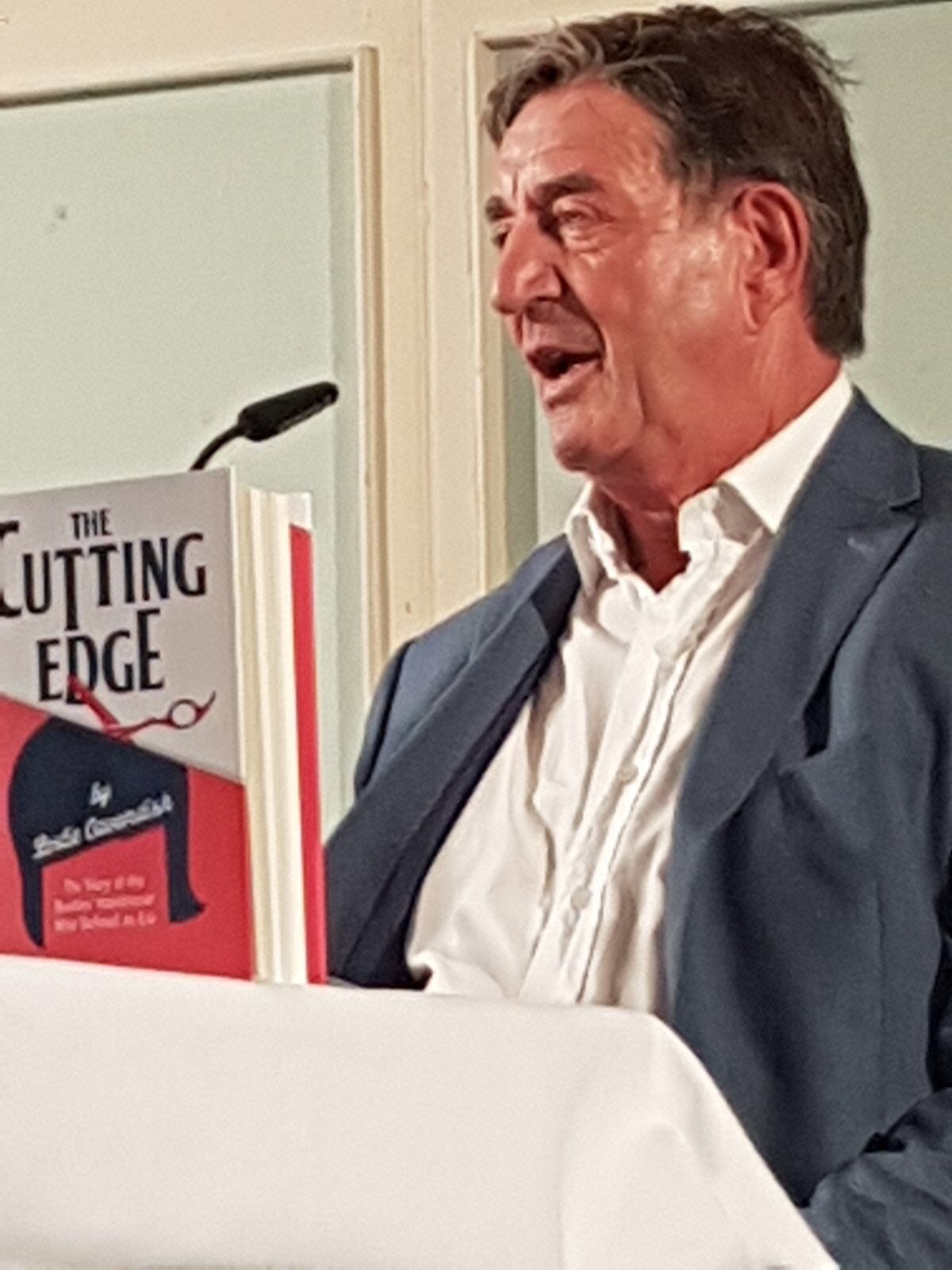

I would love it and be honoured if Mr. Cavendish would cut my hair. PS… brilliant book!
Shine and raWk on baby! 😎✌️💛